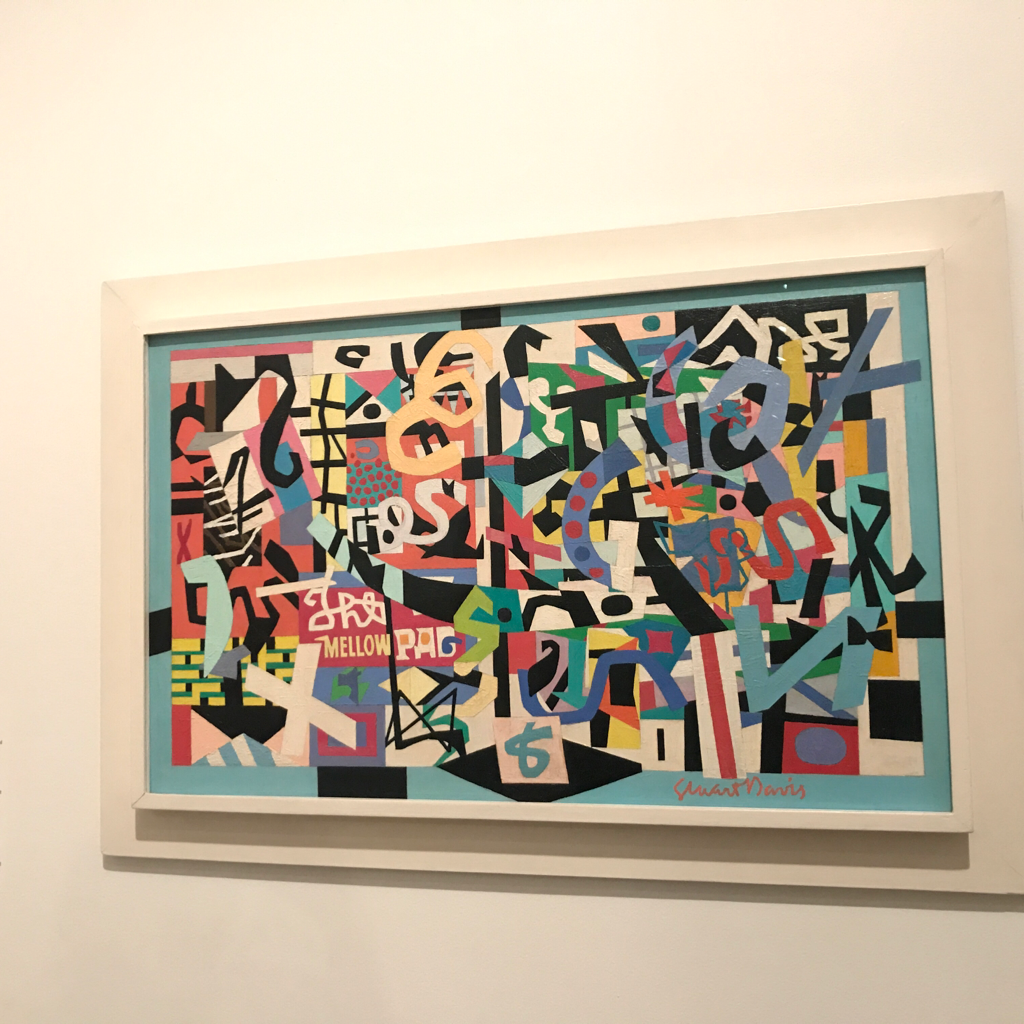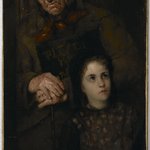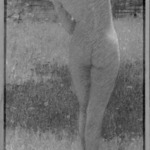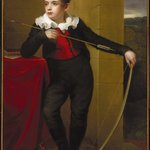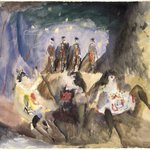

Stuart Davis (American, 1892–1964). The Mellow Pad, 1945–1951. Oil on canvas, 26 1/4 x 42 1/8 in. (66.7 x 107 cm). Brooklyn Museum, Bequest of Edith and Milton Lowenthal, 1992.11.6 (Photo: Brooklyn Museum, 1992.11.6_PS9.jpg)
The Mellow Pad
Stuart Davis
American Art
On View: American Art Galleries, 5th Floor, Imagining the New Nation’s Landscape, 1800–1880
The starting point for this lively patterned abstraction was an earlier canvas by Stuart Davis entitled House and Street, 1931. Treating each subsequent version as a riff on a jazz theme, Davis moved further and further away from his original composition to establish independent, rhythmic color patterns that retained only a few direct visual cues to the original composition. Davis theorized that abstract compositions could communicate to the viewer something of the subject from which they were derived. This composition embodies the “mellow pad”—jazz lingo for the “cool” place to be. Jazz rhythms were a potent inspiration for Davis, and their presence added a distinctly American component to his abstractions.
MEDIUM
Oil on canvas
DATES
1945–1951
DIMENSIONS
26 1/4 x 42 1/8 in. (66.7 x 107 cm)
frame: 32 1/2 × 49 1/2 × 3 11/16 in. (82.6 × 125.7 × 9.4 cm) (show scale)



SIGNATURE
Signed lower right: "Stuart Davis"
INSCRIPTIONS
Signed, dated, and inscribed on discarded original stretcher verso: "THE MELLOW PAD STUART DAVIS 1945-1950-1"
COLLECTIONS
American Art
ACCESSION NUMBER
1992.11.6
CREDIT LINE
Bequest of Edith and Milton Lowenthal
MUSEUM LOCATION
This item is on view in American Art Galleries, 5th Floor, Imagining the New Nation’s Landscape, 1800–1880
CAPTION
Stuart Davis (American, 1892–1964). The Mellow Pad, 1945–1951. Oil on canvas, 26 1/4 x 42 1/8 in. (66.7 x 107 cm). Brooklyn Museum, Bequest of Edith and Milton Lowenthal, 1992.11.6 (Photo: Brooklyn Museum, 1992.11.6_PS9.jpg)
IMAGE
overall, 1992.11.6_PS9.jpg. Brooklyn Museum photograph, 2016
"CUR" at the beginning of an image file name means that the image was created by a curatorial staff member. These study images may be digital point-and-shoot photographs, when we don\'t yet have high-quality studio photography, or they may be scans of older negatives, slides, or photographic prints, providing historical documentation of the object.
RIGHTS STATEMENT
No known copyright restrictions
This work may be in the public domain in the United States. Works created by United States and non-United States nationals published prior to 1923 are in the public domain, subject to the terms of any applicable treaty or agreement.
You may download and use Brooklyn Museum images of this work. Please include caption information from this page and credit the Brooklyn Museum. If you need a high resolution file, please fill out our online application form (charges apply).
The Museum does not warrant that the use of this work will not infringe on the rights of third parties, such as artists or artists' heirs holding the rights to the work. It is your responsibility to determine and satisfy copyright or other use restrictions before copying, transmitting, or making other use of protected items beyond that allowed by "fair use," as such term is understood under the United States Copyright Act.
The Brooklyn Museum makes no representations or warranties with respect to the application or terms of any international agreement governing copyright protection in the United States for works created by foreign nationals.
For further information about copyright, we recommend resources at the United States Library of Congress, Cornell University, Copyright and Cultural Institutions: Guidelines for U.S. Libraries, Archives, and Museums, and Copyright Watch.
For more information about the Museum's rights project, including how rights types are assigned, please see our blog posts on copyright.
If you have any information regarding this work and rights to it, please contact copyright@brooklynmuseum.org.
RECORD COMPLETENESS
Not every record you will find here is complete. More information is available for some works than for others, and some entries have been updated more recently. Records are frequently reviewed and revised, and we welcome any additional information you might have.




